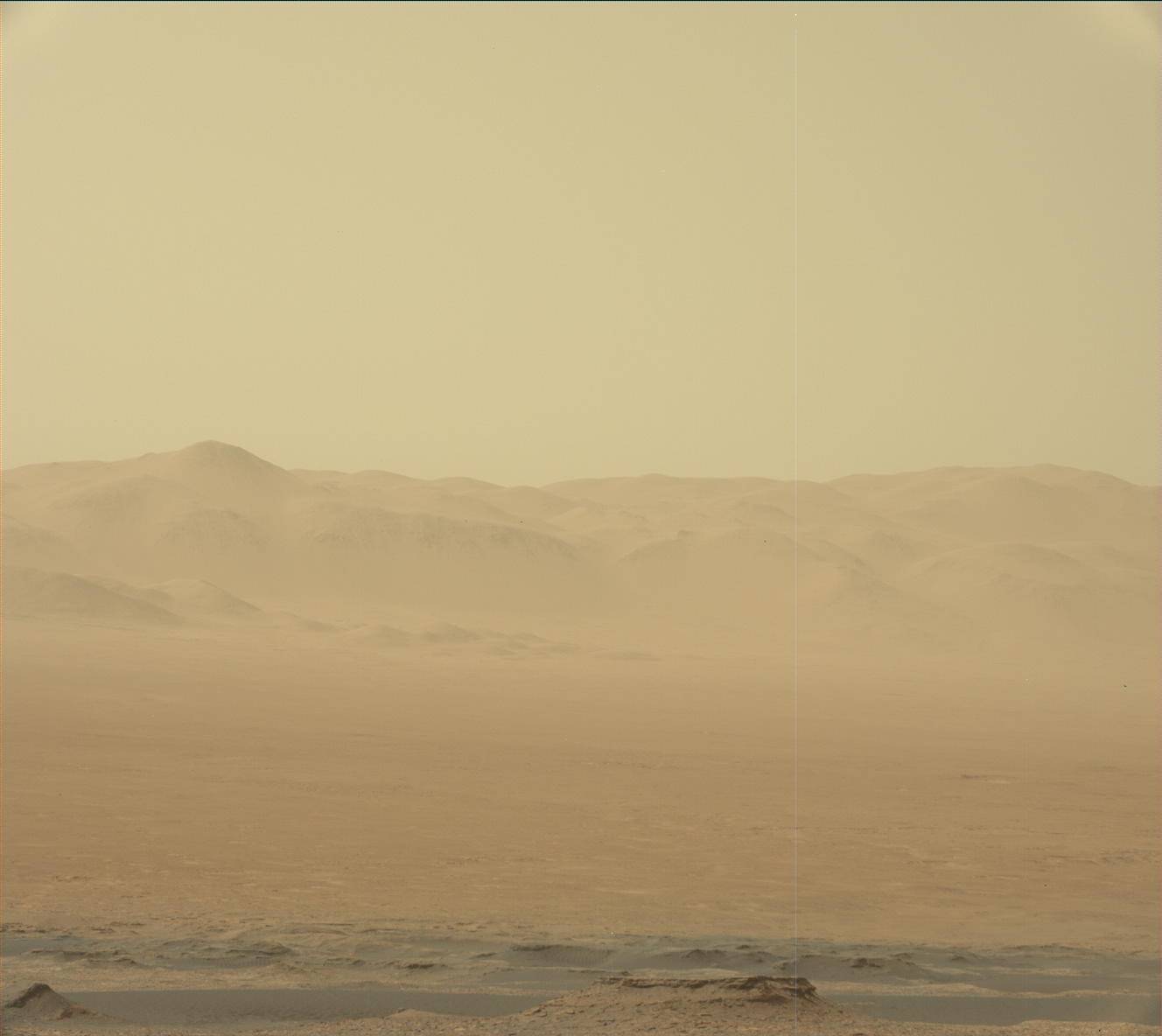NASA's Curiosity Rover Is Tracking a Huge Dust Storm on Mars (Photo)

NASA's Curiosity rover is keeping tabs on the huge Martian dust storm that has sidelined its older cousin on the other side of the planet.
That storm, which covered as much area as North America and Russia combined as of today (June 12), has engulfed the golf-cart-size Opportunity rover, plunging its environs into perpetual darkness. The solar-powered Opportunity has therefore temporarily ceased science operations.
A recent photo by Curiosity suggests that dust may be encroaching a bit on its locale, the 96-mile-wide (154 kilometers) Gale Crater. But Curiosity is nuclear-powered, so a drop in sunlight isn't nearly as concerning to its handlers. [Curiosity Rover's 10 Biggest Mars Moments of Its 1st 5 Years]
Still, the Curiosity team is trying to monitor the storm.
"To measure dust in the atmosphere, we'll first point Mastcam towards the sun and take a tau measurement, which lets us determine the optical depth vertically," mission team member Rachel Kronyak wrote in an update on Friday (June 8). (Mastcam, short for "Mast Camera," is the two-camera system on Curiosity's head-like mast. The cameras capture color photos and video of the Red Planet landscape and soil for a variety of purposes.)
"Then we'll take a Mastcam image of the crater rim to determine line-of-sight extinction, which is directly related to the amount of dust present. ENV will also take a few movies with Navcam to assess clouds, wind direction, and to look for dust devils," Kronyak added. ("ENV" refers to the mission's environmental-science team. Navcam is Curiosity's black-and-white navigation-camera system, whose images help the rover team plan routes.)
This is not the first major dust storm weathered by Opportunity, which landed on the Red Planet in January 2004: An even larger storm forced the rover to stand down for two weeks in 2007. But the dust surrounding Opportunity now is much thicker than it was during that previous storm, mission team members have said.
Get the Space.com Newsletter
Breaking space news, the latest updates on rocket launches, skywatching events and more!
Opportunity beamed a message to its handlers on Sunday (June 10), which is a good sign; it shows the rover still has a decent amount of battery power left. Mission team members have a delicate balancing act ahead if the dust storm persists; they'll need to run Opportunity's heaters enough to keep the rover from freezing, but not so much that they run out its batteries.
And Martian cold can kill. Opportunity's twin, Spirit, which also touched down on the Red Planet in January 2004, apparently froze to death after getting stuck in thick sand in 2010.
Curiosity has been exploring Gale Crater since August 2012. The car-size rover started its Mars mission on the crater floor, but it's currently climbing through the foothills of Mount Sharp, which rises 3.4 miles (5.5 km) into the Martian sky from Gale's center.
Follow Mike Wall on Twitter @michaeldwall and Google+. Follow us @Spacedotcom, Facebook or Google+. Originally published on Space.com.
Join our Space Forums to keep talking space on the latest missions, night sky and more! And if you have a news tip, correction or comment, let us know at: community@space.com.

Michael Wall is a Senior Space Writer with Space.com and joined the team in 2010. He primarily covers exoplanets, spaceflight and military space, but has been known to dabble in the space art beat. His book about the search for alien life, "Out There," was published on Nov. 13, 2018. Before becoming a science writer, Michael worked as a herpetologist and wildlife biologist. He has a Ph.D. in evolutionary biology from the University of Sydney, Australia, a bachelor's degree from the University of Arizona, and a graduate certificate in science writing from the University of California, Santa Cruz. To find out what his latest project is, you can follow Michael on Twitter.









